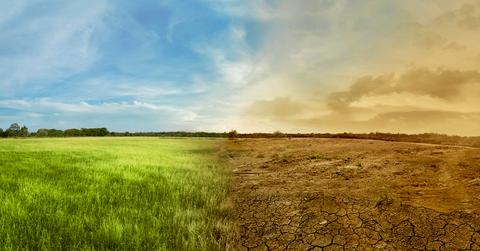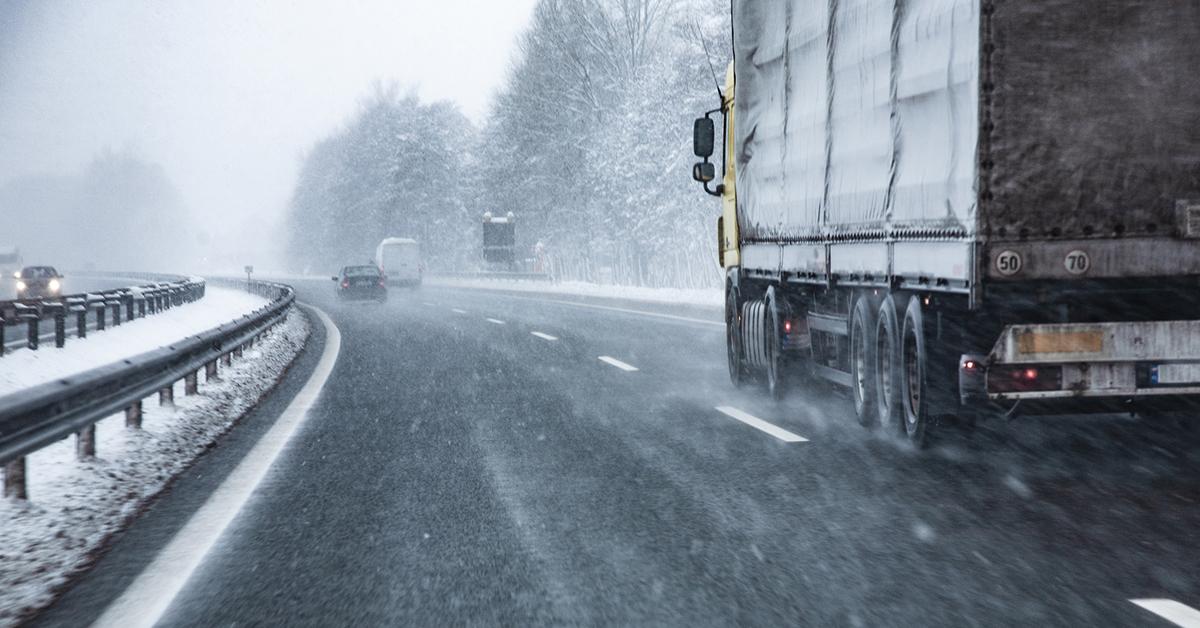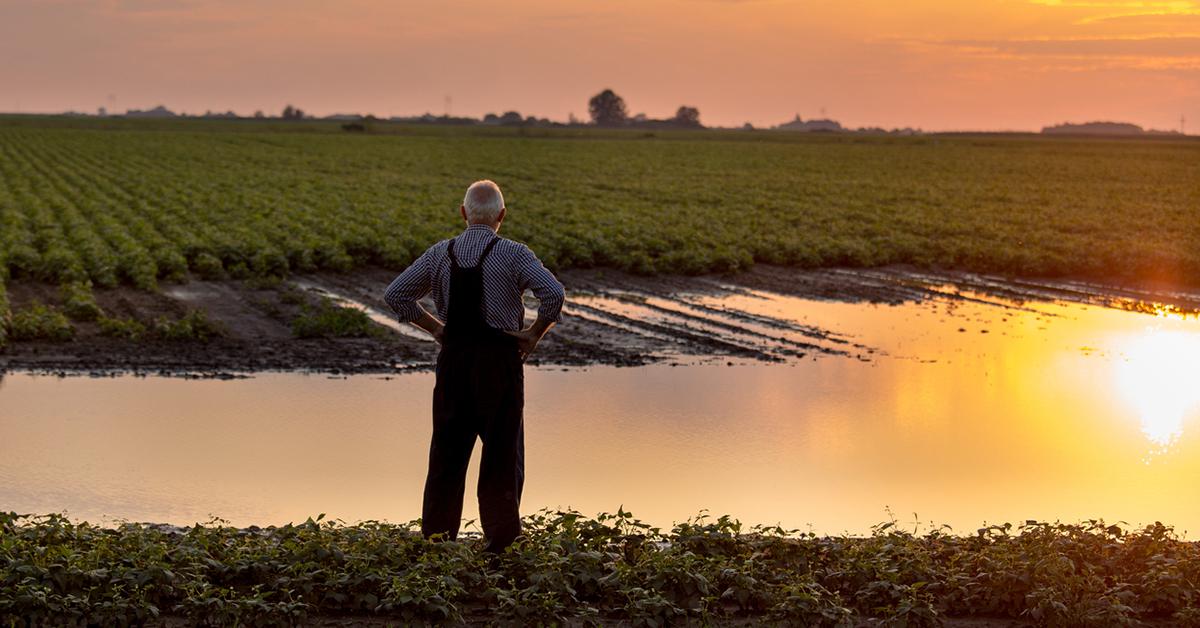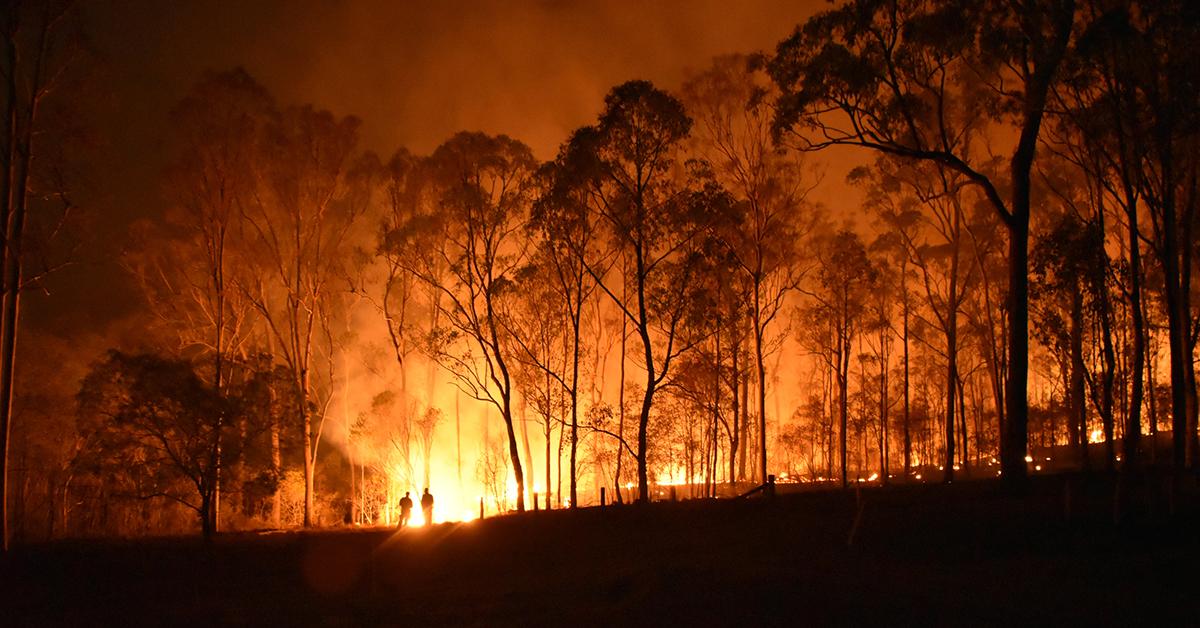How Are Climate and Weather Different?
Updated Sept. 8 2020, 2:21 p.m. ET

Weather and climate are not the same thing and yet, we sometimes tend to conflate the two — especially when it comes to issues related to, and efforts of, sustainability. But what really is the difference between climate and weather?
Think about it: The general dialogue about weather and climate goes something like, “Climate change is real, just look at the weather.” Or, “The unprecedented hot temperatures are proof of climate change.” With “climate” and “weather” being used almost interchangeably at this point (and wrongfully so), it can be a bit difficult to really suss out the main differences between the two.
So, how are climate and weather different? Let’s find out.
What is the difference between climate and weather?
The easiest way to remember the difference between climate and weather is a memory device of sorts, a little saying that nearly rhymes: “Climate is what you expect; weather is what you get.”
What does this saying mean? Essentially, the saying means that climate is the kind of conditions you come to expect for your area. So, if it’s fall in New York, you expect a specific kind of climate for this season — a climate usually categorized by cooler temperatures, especially at night, in the lower end of the 70s and 60s. If it’s February in New York, however, the climate you expect is obviously different based on the season: It’s relatively normal for temperatures to be much colder in February — around the 20° or 30° Fahrenheit markers, if not colder — and snow is feasible.
Speaking of snow, climate is also an indicator of how much snowfall or rainfall there will be, as well as how windy it may get. While “snow,” “rain,” and “wind” are examples of weather events, the climate refers to what kind of weather events are traditional — or expected — for each season in a specific area.
For example, the climate in a desert is a far cry from what it is come February in New York; in a desert area, the climate is expected to be dryer, less humid, and much hotter, with temperatures dropping down significantly to as low as 20° Fahrenheit.
What is weather?

According to the National Oceanic and Atmospheric Administration (NOAA), “Weather is the mix of events that happen each day in our atmosphere. Even though there’s only one atmosphere on Earth, the weather isn’t the same all around the world.” The NOAA adds, “Weather is different in different parts of the world and changes over minutes, hours, days, and weeks.”
Weather starts in the atmosphere, but many different factors come into play in producing certain types of weather and weather events. These factors include temperature, humidity, wind speed, air pressure, and more. Different types of weather can include warm temperatures, sunshine, clouds, chiller temperatures, freezing temperatures, snow, rain, hail, hurricanes, tornados, and more.
What is climate?

Climate is made up of individual weather events that are expected for a specific place during a specific time of year. The NOAA says, “Whereas weather refers to short-term changes in the atmosphere, climate describes what the weather is like over a long period of time in a specific area.” This description of a long period of time can be seasonal.
The NOAA adds, “Different regions can have different climates. To describe the climate of a place, we might say what the temperatures are like during different seasons, how windy it usually is, or how much rain or snow typically falls.”
Like weather, there is a lot that goes into describing or labeling a type of climate. These factors generally include averages of common weather: the average amount of precipitation, like-minded temperatures, humidity, wind, and more.
Established ideas about climate help us understand whether or not the current weather in our area is “normal,” or more generally, how it compares to weather in that area during that time frame in past years. This is called Climate Normals — the averages of weather observation during a 30-year span, according to the NOAA. Climate Normals are a record of averages that allow the weathermen to tell us the warmest day of the year or the coldest, or how the weather was this day last year in comparison to today.
How does climate change impact weather?
Climate change, according to NASA, “describes a change in the average conditions — such as temperature and rainfall — in a region over a long period of time.” It sounds a lot like the definition of climate, right? But climate change is marked by a change in those average conditions. So, if it’s generally 50° Fahrenheit in a given area during a particular time span and then it changes to an average of 60° Fahrenheit in that same area during that same time, that can be understood as a change in climate.
In fact, it’s not simply a change; it’s indicative of the average global temperature increasing worldwide, meaning getting hotter.
Climate change is caused by human activities that cause greenhouse gas emissions, which cause the Earth’s surface and average global temperature to heat up, which ultimately causes climate patterns to change. This happens when greenhouse gas emissions get trapped in the Earth’s atmosphere with nowhere to go; they stay there, heating up the average global temperature.
This increase in the average global temperature is an example of climate change, but most of the effects of climate change are communicated through the weather. With the average global temperature now hotter, it can result in more frequent and more extreme weather events such as natural disasters. These include hurricanes, drought, polar vortexes, storms, floods, heat waves, according to the Environmental Defense Fund (EDF).
Poor air quality is also a direct effect of climate change, with certain conditions like air pressure, temperature, and humidity worsening air quality. While poor air quality might not necessarily be a cause of worse weather — more like a result of it — poor air quality can be harmful to human health, especially for people who have complications like asthma or allergies.
How can we tell climate changes?

The weather in any given area can change rapidly and frequently. Right? It can take minutes, hours, or days, but in general, we expect the weather to change. So, with such frequent changes, how can we determine that the climate, on a larger scale, is indeed changing?
Changes in the climate happen but not in minutes, hours, or days. The time frames are much longer — over a period of years or decades. This is where Climate Normals become crucial to understanding the intensity and scope of climate change.
Through studying past averages and comparing and contrasting them to the current state of the climate, scientists agree that the Earth’s average global temperature is warming much faster than it used to. The past few years are some of the hottest on record and while more time will allow us the clarity to better assess the rate and intensity of changes in climate, it’s time that researchers estimate we do not have. After all, scientists have estimated that we have 12 years to remedy and mitigate the effects of climate change before we reach an environmental crisis.
Climate changes are also assessed through the weather, not just averages in global temperature. The more extreme weather events that occur — droughts, heat waves, hurricanes, tropical storms, polar vortexes, etc. — the stronger the indicator of climate change.